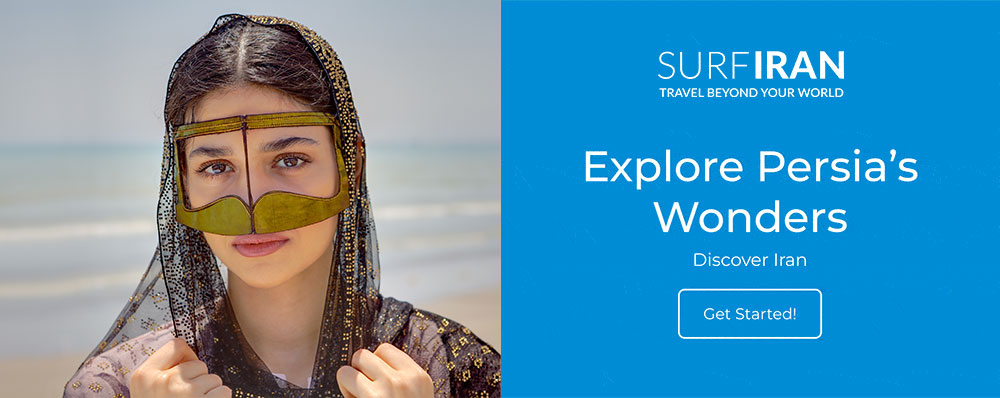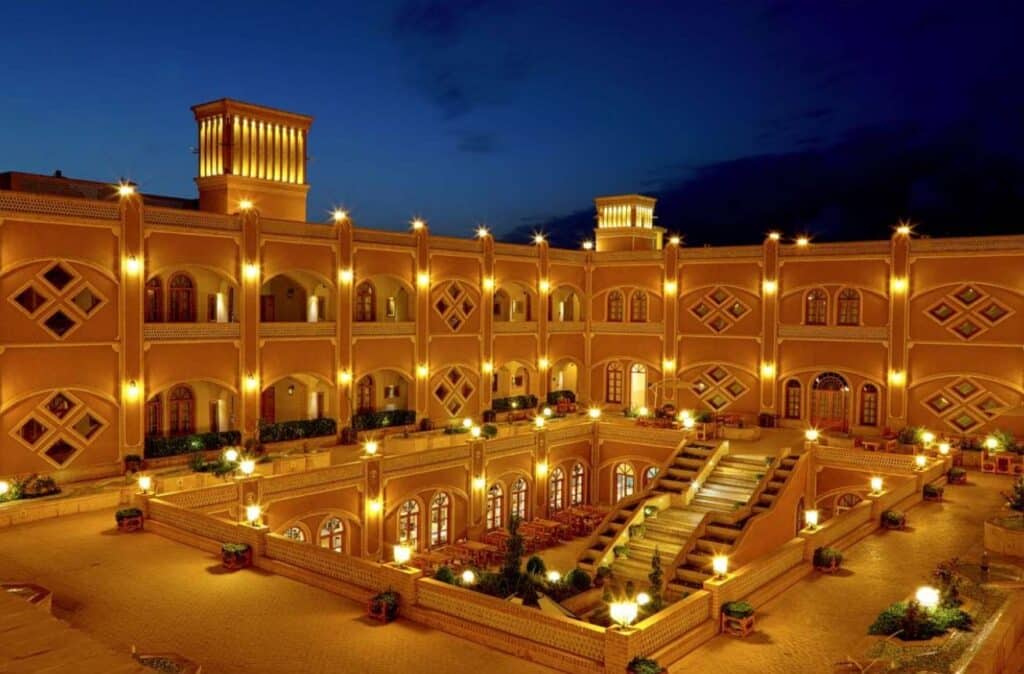Discover Yazd Old City
The Magic of Yazd Old City, Where Ancient Charm and Architectural Wonders Await

Yazd, one of Iran’s oldest cities, is a treasure trove of attractions. This city has earned the distinction of being the first historical city in Iran registered with UNESCO.
The ancient neighborhoods of Yazd are among its most captivating attractions, offering a unique glimpse into the customs and traditions of its people.
Despite modern developments, some Yazd neighborhoods have preserved their ancient character, displaying a rare continuity of history. These areas are less frequented by tourists, making them hidden gems in the city.
Contents
Why Yazd City Inscribed On UNESCO?
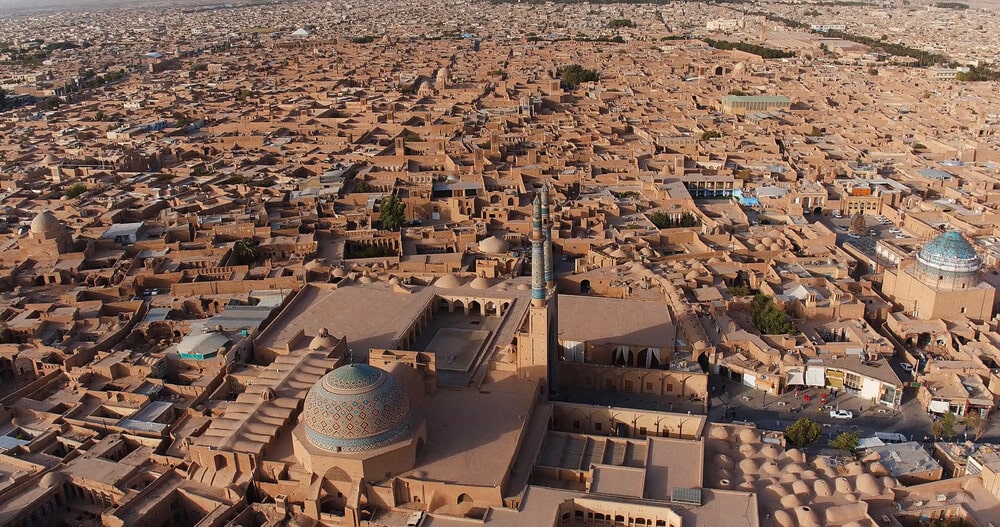
The city of Yazd, with its unique architectural style and urban planning, qualified for inclusion in the UNESCO World Heritage List for several reasons:
1. Exceptional Earthen Architecture
Yazd is renowned for its traditional earthen architecture, including the use of mud bricks, vaults, and domes. This architecture represents an ingenious response to the challenging desert environment and is a prime example of sustainable human settlement.
2. Ingenious Qanat System
The city’s survival in a harsh desert landscape is largely due to the qanat system, an ancient network of underground channels that transport water from aquifers. This system showcases the intelligent use of limited water resources in an arid setting.
3. Historical and Cultural Significance
Yazd is a living testimony to the adaptation of human life to a desert environment, reflecting diverse cultures and religions, including Islam, Judaism, and Zoroastrianism. The peaceful coexistence of these religions within the city adds to its cultural richness.
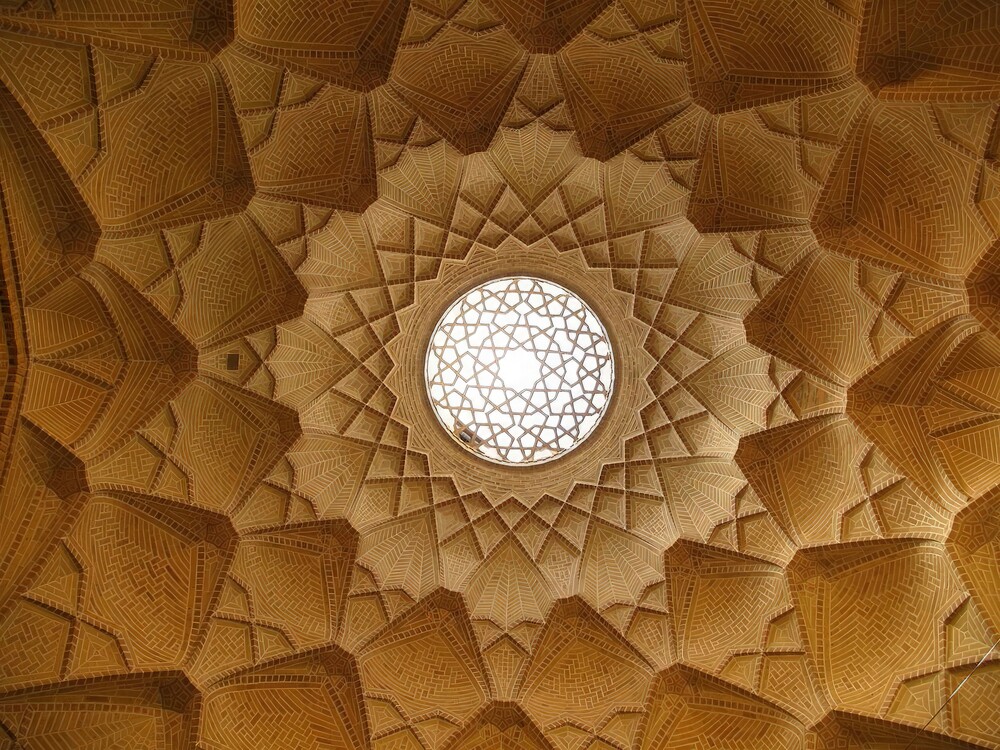
4. Urban Fabric and Layout
The city’s urban planning is notable for its unique layout, which includes sunken courtyards, underground living spaces, and partially covered alleyways. These features contribute to creating a comfortable microclimate in the extreme desert conditions.
5. Preservation of Intangible Heritage
The city’s social organization, commercial traditions, and handicrafts add to its value. Yazd is associated with the continuity of these cultural traditions for several millennia.
6. Protection and Management
Yazd has been well-preserved, especially considering the modernization efforts that have destroyed many traditional cities. The city’s integrity and authenticity are maintained through controlled development and conservation efforts.
7. Symbol of Religious Harmony
Yazd is an excellent example of the coexistence of different religions, with Islamic, Jewish, and Zoroastrian places of worship. This religious harmony further enhances its universal value.
The city’s inclusion in the UNESCO World Heritage List emphasizes the global significance of its architectural and cultural heritage, serving as a symbol of human adaptation, creativity, and resilience in the face of environmental challenges.
Read More: Yazd Travel Guide
Yazd Ancient Neighborhoods
As you step into these neighborhoods, you encounter buildings that have stood the test of time, showcasing the artistic legacy of past generations. If you’re keen to explore Yazd’s old neighborhoods and witness history up close, join us at SURFIRAN for an unforgettable journey.
Chahar Menar Neighborhood of Yazd
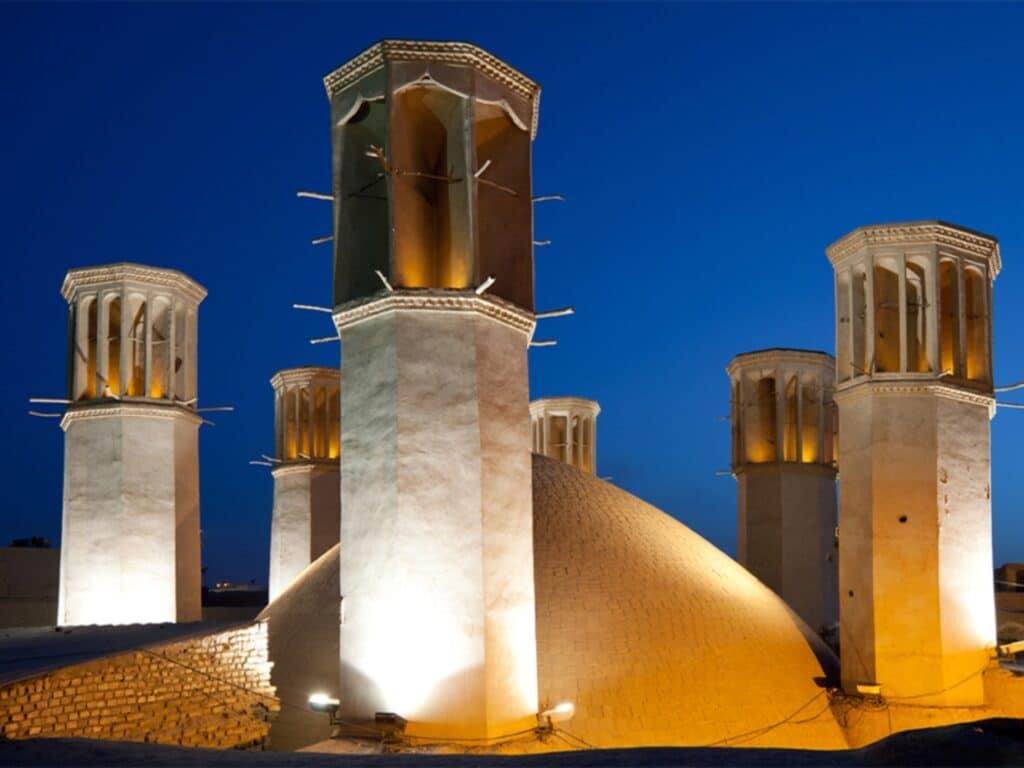
The Chahar Menar neighborhood in Yazd (locally known as Chār Munār) is situated in the heart of the city. Along with another neighborhood, Fahadan, Chahar Menar has witnessed significant historical events and houses many famous landmarks. In 2011, the neighborhood’s landmarks, including the Dowlat-Abad Garden and eight other Persian gardens, were internationally recognized.
Moreover, in 2016, all the sites in this neighborhood were nationally registered. Chahar Menar is the largest neighborhood in terms of area within Yazd’s historical fabric. The establishments of Syed Shamsuddin Mohammad ibn Roknaddin Yazdi, a notable historical figure of Yazd, including a school, bazaar, and Khanqah (Sufi monastery), played a pivotal role in the neighborhood’s formation.
If you wish to experience the charm of walking through Yazd’s oldest neighborhood, make sure to visit Chahar Menar.
Key Landmarks of Chahar Menar Neighborhood in Yazd
The Chahar Menar neighborhood in Yazd is known for its significant historical sites. Key landmarks include:
- Mir Khodr Shah Mosque (Chahar Menar Grand Mosque)
- Hosseinieh of Chahar Menar
- Mausoleums: Seyed Shamsuddin, Shah Seyed Reza, and Seyed Jalaluddin
- Tomb of Pir Alam
- Water reservoirs: Koocheh Bandon, Taheri, and Howz-e Moltakieh of Chahar Menar
- Dowlat-Abad Garden and its water reservoir
- Shah Nematollah Vali School
Fahadan Neighborhood of Yazd
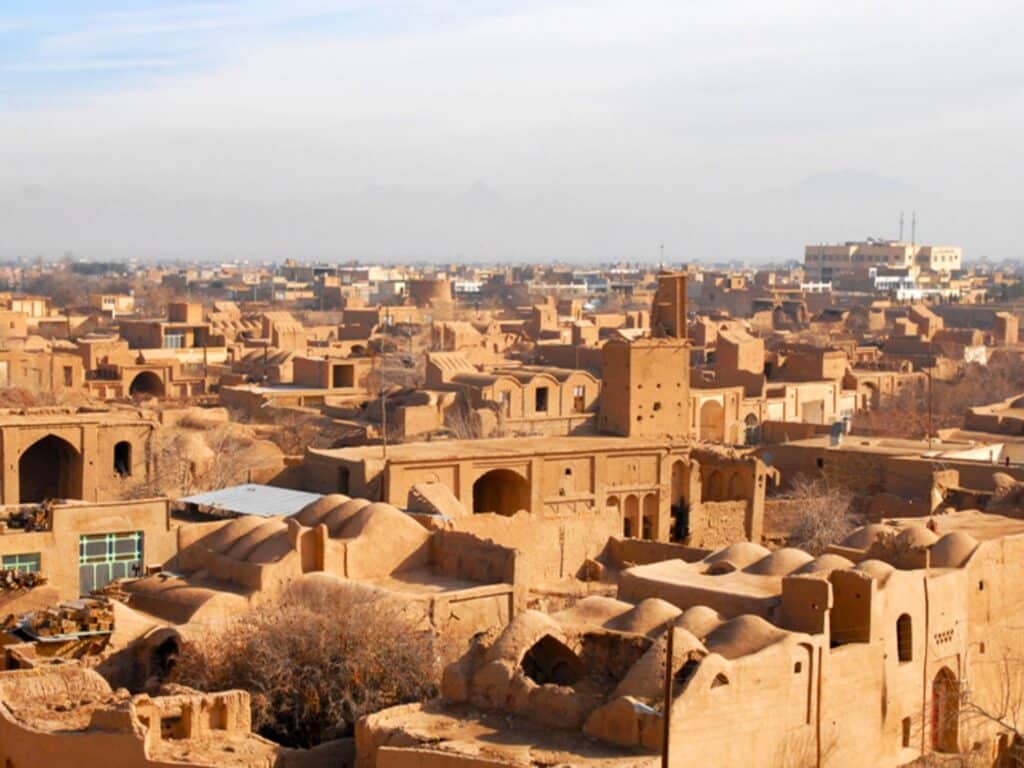
Fahadan in Yazd is one of the most important and architecturally significant neighborhoods. Historically, it was home to nobles and high-ranking military officers like Alaladol Doleh Kalantar, the governor of Yazd. The neighborhood is encircled by towers and walls, signifying its past importance.
Key structures in Fahadan Neighborhood include:
- Historic Lari House
- Imamzadeh of Seyed Panah
- Zindan-e Sekandar (Ziaiyeh School)
- Heidarzadeh Coin and Anthropology Museum
- Mausoleum of the Twelve Imams
Ab Shahi Neighborhood of Yazd
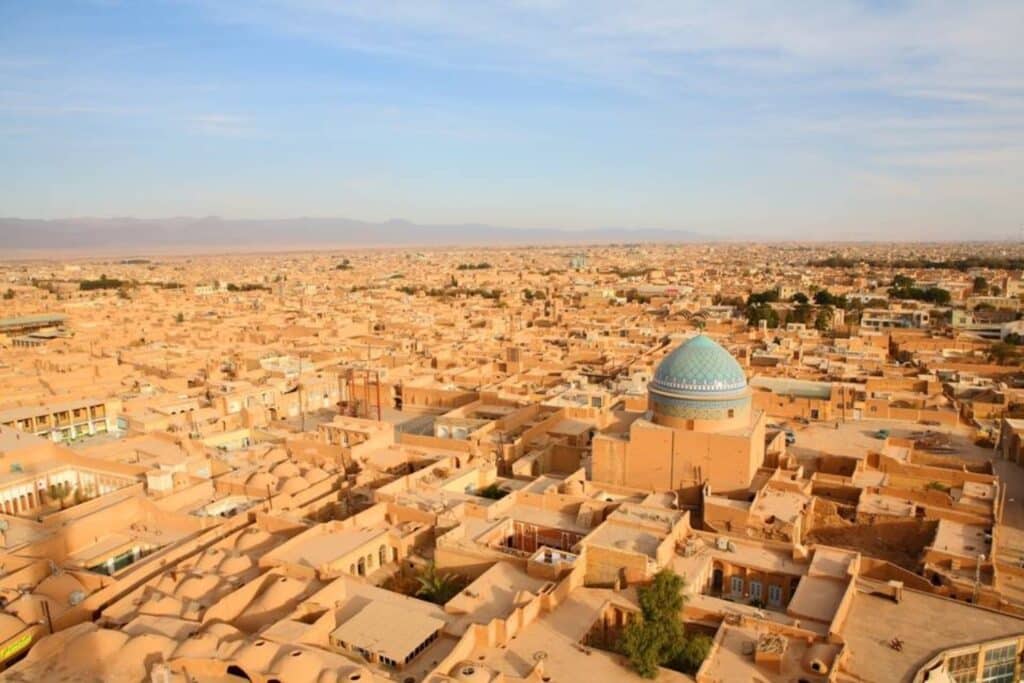
Another ancient neighborhood of Yazd is Ab Shahi, previously a small village named Naeimabad, located outside the city. It has now become one of the most populous old neighborhoods in Yazd.
According to some sources, Shah Yahya Mozaffari established this neighborhood in the 8th century. However, other sources attribute its development to Shah Shoja Mozaffari, who constructed and diverted a qanat (underground water channel) from Mehrijerd to this area, significantly contributing to its prosperity. Historically, most residents were Zoroastrians, but their numbers have dwindled over time. Today, the unique culture, dialect, and attire of the people in this neighborhood are distinctly observable.
Key sites in Ab Shahi Neighborhood include:
- Najm Abad Water Reservoir
- Askariye Water Reservoir
- Shahzadeh Naeimabad Bathhouse
- Hosseinieh of Naeimabad
- Shahzadeh Naeimabad Mosque
Khalf Khanali Neighborhood
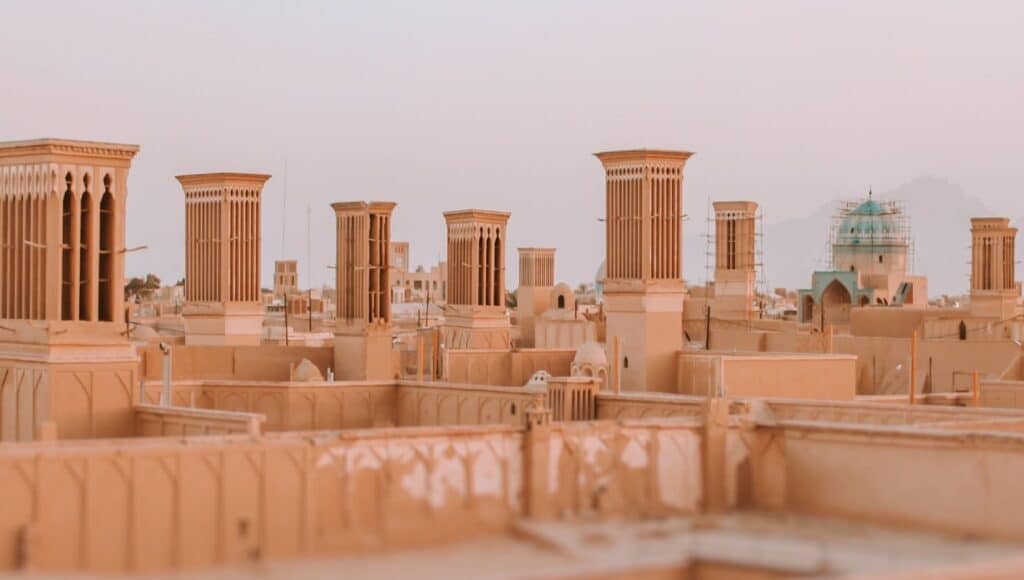
Khalf Khanali (in local dialect, Khalf Khunali) is another of Yazd’s old neighborhoods, formerly a Zoroastrian residential area. In the past, the main occupations were carpet weaving and sock knitting, and Muslims and Zoroastrians coexisted peacefully. Most historical remains in this neighborhood are Zoroastrian. Originally named “Posht-e Khan Omari,” the name changed during the Safavid era due to religious sensitivities.
Key structures in Khalf Khanali include:
- Central Zoroastrian Association of Yazd
- Horosht Library
- Darmehr of Posht-e Khanali
- Pir Elias
- Pir-e Vahen Sepand
- Khosrowi School
- Khalf Khanali Bathhouse
Sar Dorah Neighborhood of Yazd
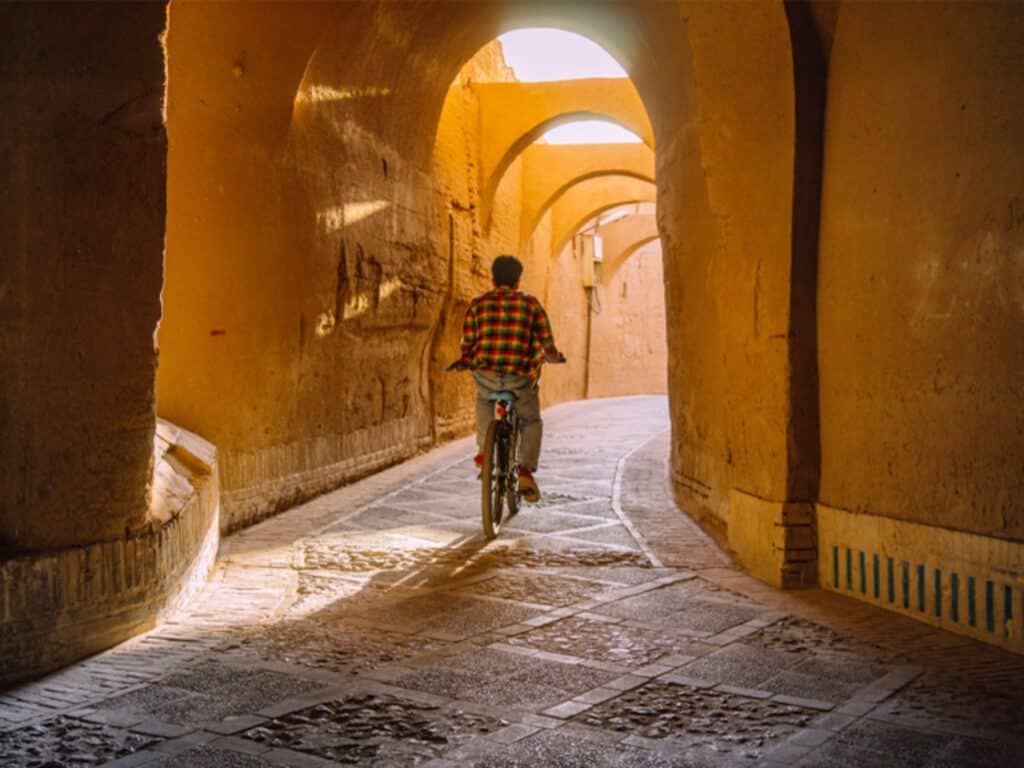
Sar Dorah, an old and pleasant neighborhood of Yazd, was established in the 9th century AH. It gained its name due to its location at the junction of roads leading to Isfahan and Shiraz. Today, it borders Koocheh Biyook to the north, Khoramshah to the south, Ahrestan to the west, and Posht Bagh to the east.
Key landmarks of Sar Dorah Neighborhood:
- Zavieh Mosque
- Zavieh Water Reservoir
- Sar Dorah Water Reservoir
- Mohammad Baqer Water Reservoir
- Iqbal Factory
Lab-e Khandagh Neighborhood
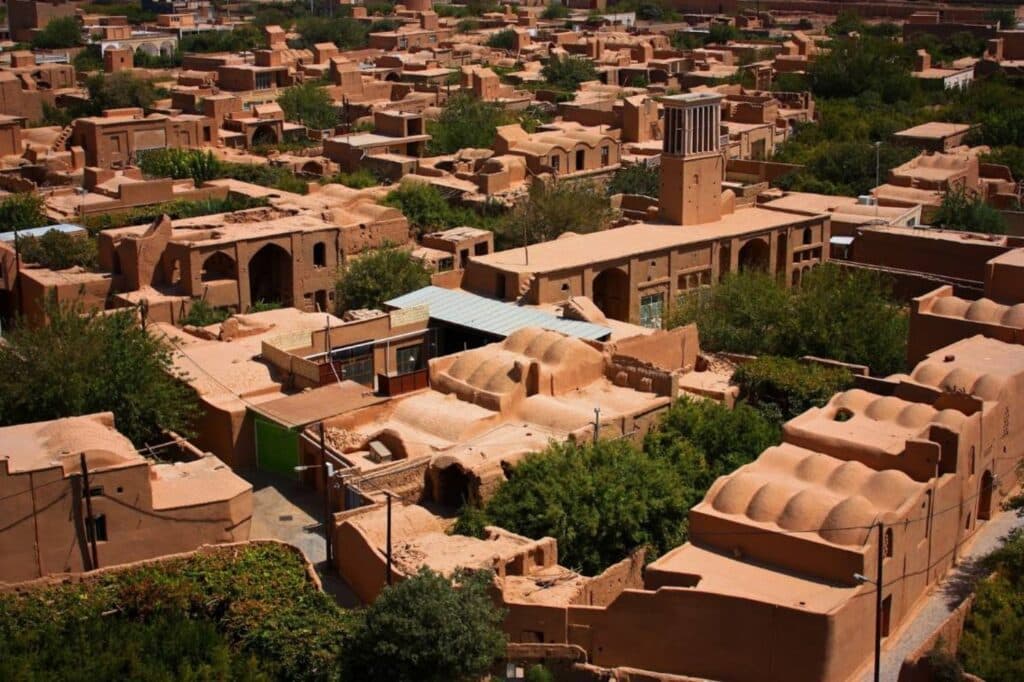
Lab-e Khandagh is another old neighborhood of Yazd, named for its proximity to an ancient moat. Little information remains about the moat, mentioned only once in the Jami’ Jafari (a historical record of Yazd during the Naderi, Zandi, and Fath Ali Shah periods). Mirza Mohammad Jafar Yazdi, a writer and translator of religious texts, lived here. Lab-e Khandagh is bordered by the Shahi Gate and Lordkiavan to the north, Qiyam Street and Darolshafa to the south and east, and Sarpolak to the west.
Key sites in Lab-e Khandagh Neighborhood:
- Part of Yazd’s defensive wall
- Hosseinieh Lab-e Khandagh
- Caravanserai of Lab-e Khandagh
- Khan Market
Shahed Baz Neighborhood
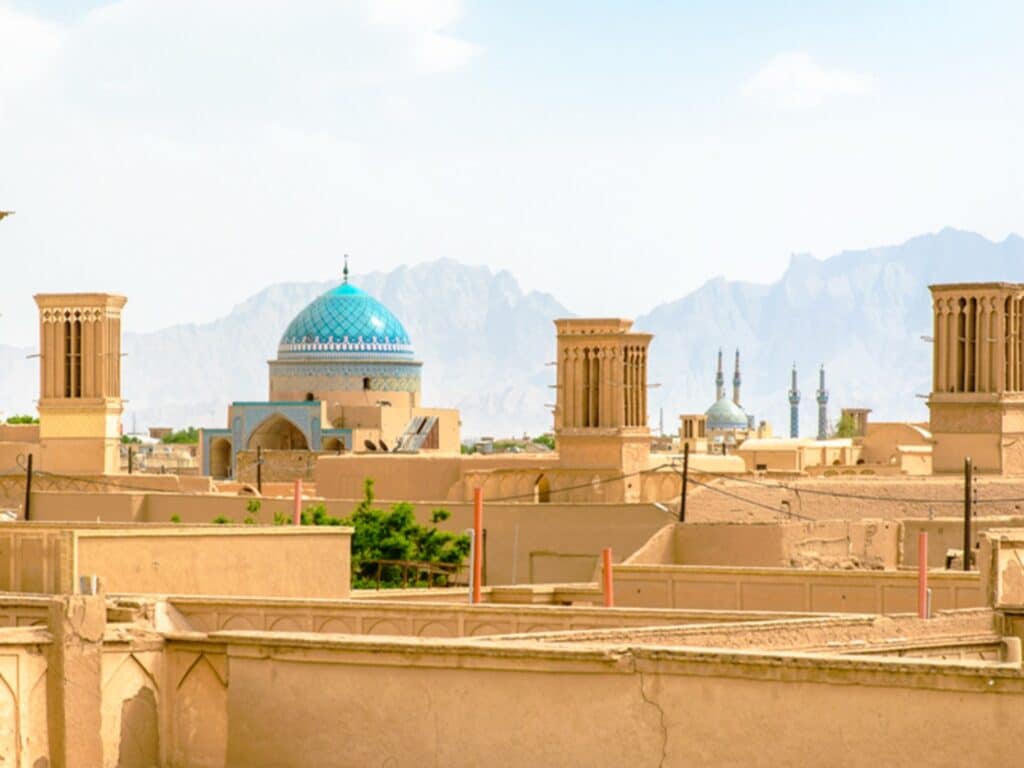
Shahed Baz, near the Amir Chakhmaq complex, is locally known as “Sherbaz.” Famous for religious ceremonies and storytelling in the Shahedbaz Hosseinieh, its Herati house is also a notable attraction. Historically, its residents were farmers, but the population has decreased, with many new residents being Iraqi.
Key sites in Shahed Baz Neighborhood:
- Shahedbaz Water Reservoir
- Shahedbaz Hosseinieh
- Shahedbaz Mosque
- Erdakanian House
Lord Kiavan Neighborhood
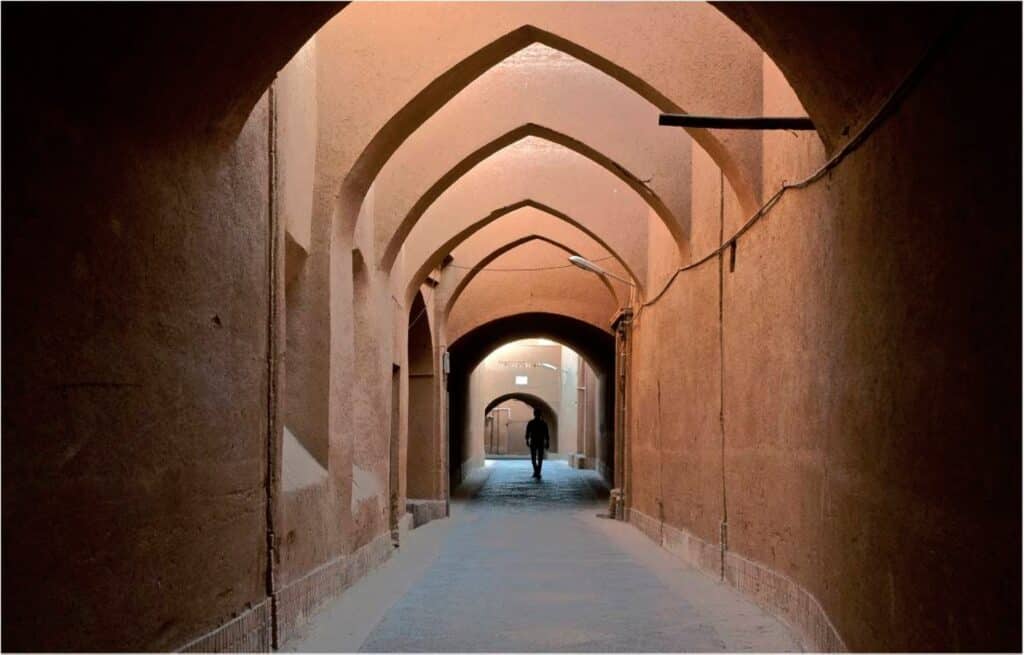
Lord Kiavan, a historic neighborhood in Yazd, has maintained its old appearance. It extends from Gandom Garden in the north to Shah Tahmasb neighborhood in the south. The area, designed as a square, used to be a marketplace for essentials like firewood and fruits. There are eight other Lords in Yazd.
Key sites in Lord Kiavan Neighborhood:
- Lord Kiavan Water Reservoir
- Lord Kiavan Area
Ab-e Shoor Neighborhood
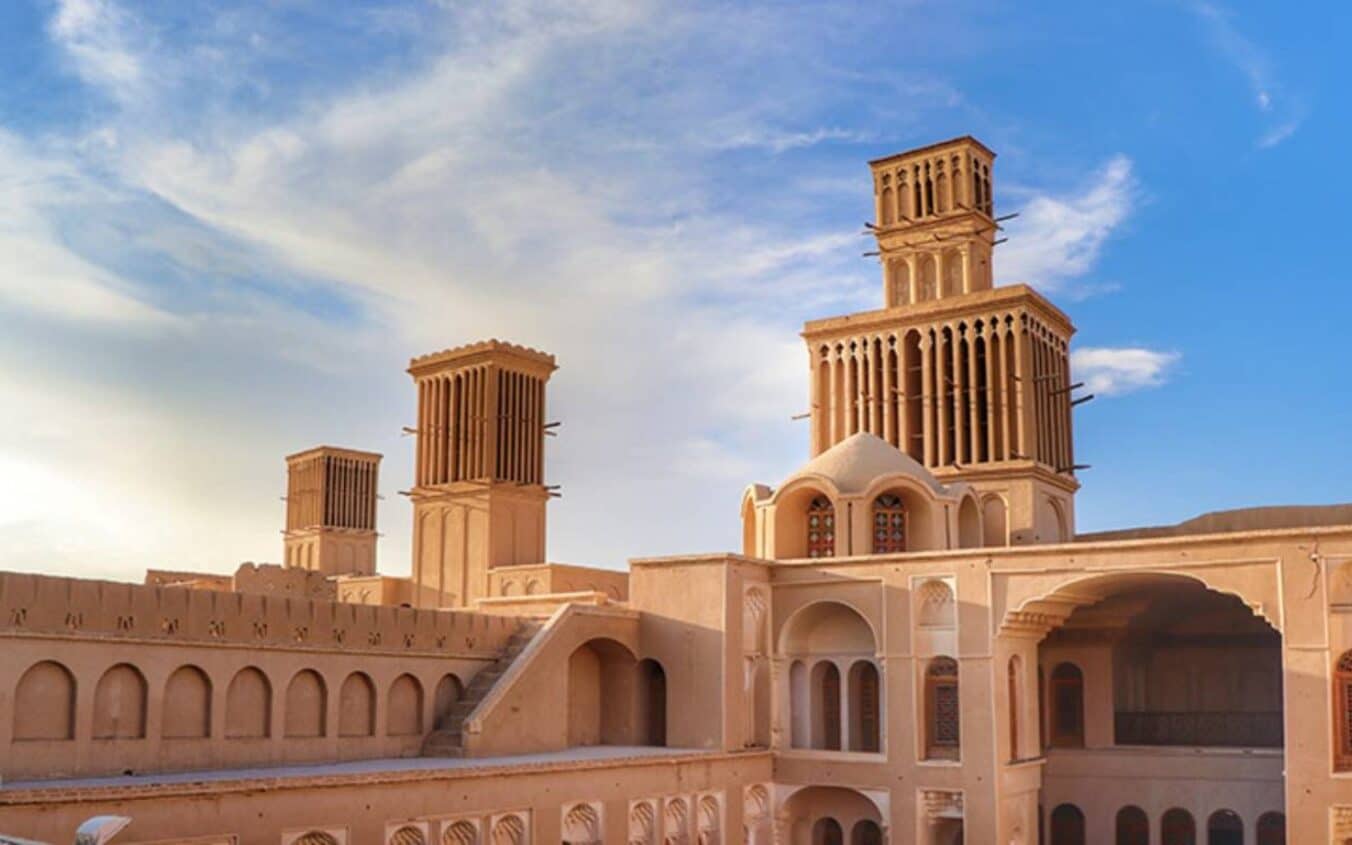
The last old neighborhood of Yazd we’ll introduce is Ab-e Shoor, formerly known as “Salghurabad.” Once a village, it became part of Yazd as the city expanded. In the 7th century AH, Salghur Shah bin Atabak Qotb al-Din, one of the Atabaks of Yazd, built the village near the Yaghoubi neighborhood and established a qanat in the salty land. The presence of this saline qanat led to the area’s later name, “Ab-e Shoor.” It is bordered by Yaghoubi and Malmir to the south, Talaghani district to the north, Fahadan to the west, and Yaghoubi and Maryam Abad to the east.
Key sites in Ab-e Shoor Neighborhood:
- Seyyed Nasr Mausoleum
- Ab-e Shoor Hosseinieh
- Ab-e Shoor Mosque
- Salghurabad Qanat
Conclusion: Yazd Old Neighborhoods
This article has introduced several of Yazd’s old neighborhoods, which encapsulate distant pasts and the artistry of people long gone. These neighborhoods offer a chance for tourists to step away from small apartments and bustling streets, finding tranquility and beauty in their historical ambience.
